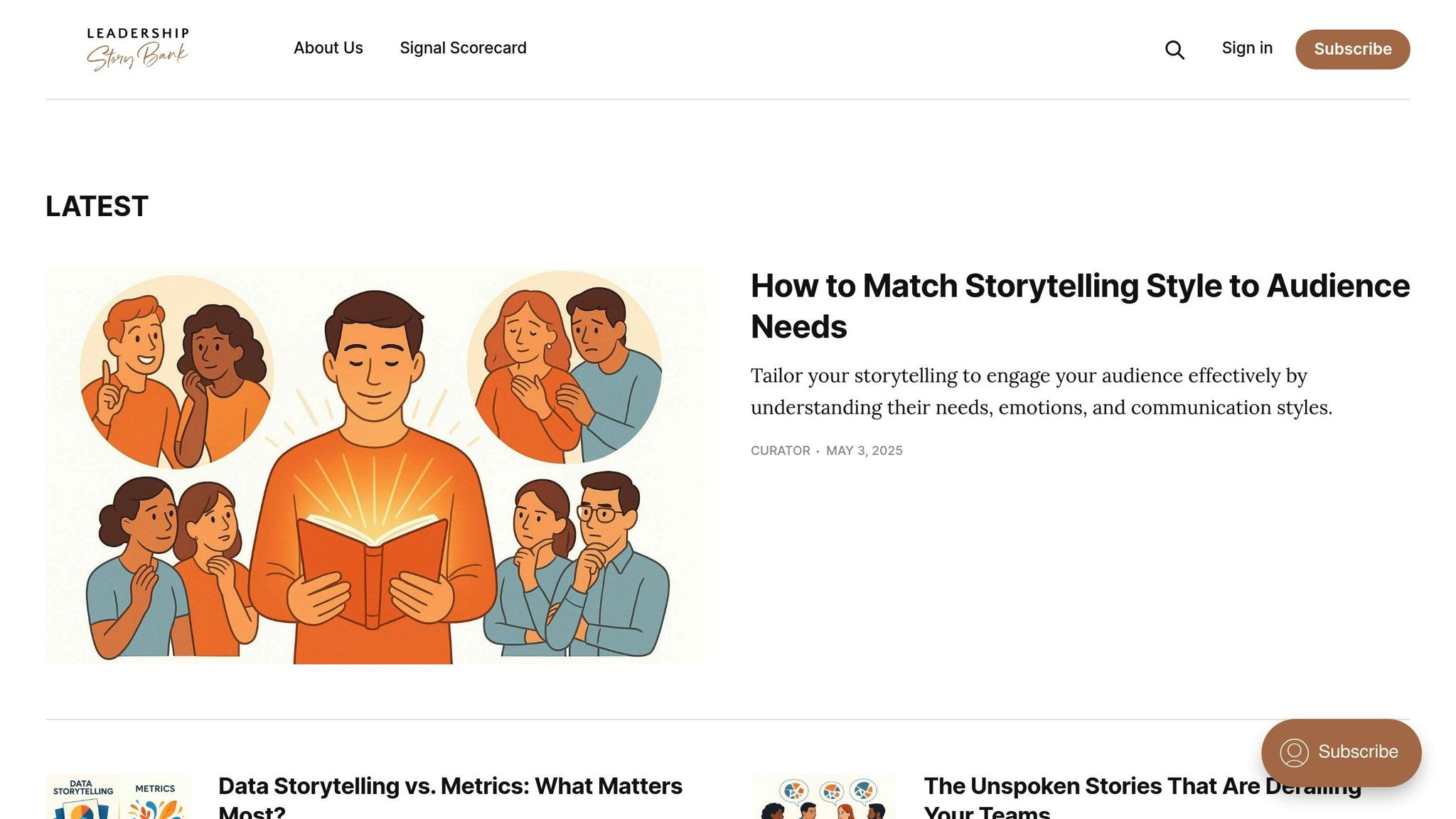Direct vs. Indirect Communication: Cultural Differences
Explore how direct and indirect communication styles influence leadership effectiveness in multicultural environments.

How do direct and indirect communication styles impact leadership?
Direct communication is clear and straightforward, ideal for quick decisions and clarity. Indirect communication relies on subtlety and context, prioritising harmony and relationships. Effective leaders adapt their style to fit the situation or team.
Key Points at a Glance:
- Direct Style: Clear, fast, task-focused but can seem blunt.
- Indirect Style: Subtle, relationship-focused but slower and less clear.
- Cultural Fit: Direct is common in Western cultures, indirect in Eastern cultures.
- Leadership Tip: Adapt to your team's needs - balance clarity with cultural sensitivity.
Quick Comparison Table:
| Aspect | Direct Style | Indirect Style |
|---|---|---|
| Focus | Clarity and efficiency | Relationships and harmony |
| Delivery | Explicit and straightforward | Subtle and context-driven |
| Speed | Faster decision-making | Slower, deliberative |
| Conflict | Addresses issues head-on | Resolves gradually |
| Cultural Fit | Common in Western cultures | Common in Eastern cultures |
Understanding these styles helps leaders bridge communication gaps, especially in multicultural teams.
Cultural Dimension: direct versus indirect communication style
Direct vs Indirect: Core Differences
Understanding the differences between direct and indirect communication is crucial for effective leadership, especially in a global context. Each method has its own features that influence how messages are conveyed and understood.
Direct Style: Advantages and Challenges
Direct communication is ideal when clarity and quick action are priorities. Its main benefits include:
- Clear expectations: Everyone knows what’s required right away.
- Less room for misunderstanding: Messages are straightforward.
- Faster decisions: No need for lengthy discussions.
- Defined accountability: Responsibilities are clearly assigned.
However, this approach isn’t without drawbacks:
- Cultural perception: It can come across as blunt or rude in some cultures.
- Relationship strain: If not handled carefully, it might harm relationships.
- Overlooking context: Subtle details or emotions may be missed.
- Defensive reactions: Some may feel attacked or criticised.
Indirect Style: Advantages and Challenges
Indirect communication focuses on maintaining relationships and fostering a collaborative atmosphere. Its strengths include:
- Building connections: Stronger interpersonal bonds are formed.
- Minimised conflict: Tensions are less likely to escalate.
- Cultural sensitivity: Works well in diverse or multicultural settings.
- Team cohesion: Encourages harmony and mutual respect.
On the downside, indirect communication has its limitations:
- Ambiguity: Messages can be vague or unclear.
- Slower decisions: Reaching a consensus takes time.
- Misunderstandings: Subtlety can lead to confusion.
- Harder to track outcomes: Progress may be less measurable.
Comparison at a Glance
| Aspect | Direct Style | Indirect Style |
|---|---|---|
| Primary Focus | Clarity and efficiency | Relationships and harmony |
| Delivery | Explicit and straightforward | Subtle and context-driven |
| Speed | Faster decision-making | Slower, more deliberative |
| Conflict | Addresses issues head-on | Resolves issues gradually |
| Cultural Fit | Common in Western cultures | Common in Eastern cultures |
| Team Approach | Task-focused | Relationship-focused |
| Decisions | Clear, quick outcomes | Collaborative and measured |
| Feedback | Direct and immediate | Indirect and gradual |
The real skill lies in knowing when to use each style. By adapting to the situation and cultural context, you can communicate more effectively and achieve better outcomes. This balance is explored further in the context of regional communication preferences.
Regional Communication Preferences
Regional norms add another layer to the differences between direct and indirect communication styles, shaping how leaders interact across cultures. These norms influence how feedback is given, decisions are made, and conflicts are resolved. In the United Kingdom, this plays out in a preference for indirect communication, particularly in sensitive or challenging situations.
UK Communication Patterns
British communication strikes a balance between directness and subtlety, often leaning towards indirect methods. This approach reflects cultural values like politeness, maintaining social harmony, and avoiding overt confrontation. For example, feedback is frequently delivered using a "feedback sandwich", where criticism is placed between positive remarks. A manager might say, "Your presentation had some excellent points. We might want to adjust the pace slightly, but overall, you're moving in the right direction."
When it comes to change, British leaders often rely on storytelling to simplify complex ideas and make them relatable.
Here are some common British communication traits:
| Communication Aspect | Typical British Approach |
|---|---|
| Feedback Delivery | Subtle, cushioned with positives |
| Conflict Management | Diplomatic and measured |
| Decision-Making | Collaborative and consensus-driven |
| Disagreement Expression | Indirect and implied |
| Critical Comments | Understated or hinted at |
These patterns show the importance of tailoring communication to bridge cultural differences effectively.
Preventing Cross-Style Conflicts
Avoiding misunderstandings between diverse communication styles can be achieved with a few practical steps:
-
Active Listening Training
Regular workshops can help team members pick up on both direct and indirect cues, reducing miscommunication in multicultural settings. -
Cultural Context Guidelines
Create clear guidelines that account for different communication preferences. For instance, phrases like "that's quite interesting" may signal disagreement in British contexts.
Successfully preventing cross-style conflicts involves developing cultural awareness and adapting communication approaches to respect regional norms while ensuring mutual understanding.
Leading Teams Across Regions
Effective leadership in multicultural settings hinges on understanding and addressing diverse communication styles. Balancing clarity with cultural awareness is key to managing teams across regions successfully.
Matching Communication Style to Team Needs
Leaders should tailor their communication to fit the cultural makeup and preferences of their teams. Here's a simple framework to guide this:
| Team Composition | Primary Style | Adaptation Strategy |
|---|---|---|
| Predominantly Direct | Direct | Incorporate relationship-building elements |
| Predominantly Indirect | Indirect | Clarify actions and set clear deadlines |
| Mixed | Hybrid | Combine both styles with clear signposting |
This approach ensures communication resonates with the team while respecting cultural nuances.
Connecting Through Stories
Stories are a powerful way to bridge different communication styles. They simplify complex ideas and make them relatable. To craft effective stories:
- Set the Scene: Provide clear context and explain why it matters.
- Engage Emotionally: Share experiences that the team can relate to.
- Offer Practical Steps: Conclude with specific and actionable insights.
Leadership Story Bank Tools

The Leadership Story Bank offers structured tools to help leaders improve their communication skills. These resources support leaders in:
-
Expanding Communication Skills
Understand and respond to varied communication preferences within the team. -
Creating Impactful Narratives
Develop stories that bridge cultural differences and motivate the team. -
Guiding Through Transitions
Lead teams through change while sustaining trust and cohesion.
Tips for Mixed-Style Communication
Communicating effectively in mixed-style settings means paying attention to both what’s said and what’s implied. Building on earlier points about direct and indirect communication, here are some practical tips to handle the challenges of mixed communication styles.
Reading Indirect Messages
To understand indirect communication, focus on more than just words - context is key.
Non-verbal Signals
- Pay attention to pauses or hesitations.
- Observe facial expressions for subtle cues.
- Notice shifts in usual behaviour or tone.
Cultural Context Markers
- Look out for phrases that might imply disagreement.
- Recognise silence as a moment of thought or reflection.
- Be aware of sudden changes in the topic of conversation.
Here’s a quick guide to help interpret indirect messages:
| Signal | Potential Meaning | Suggested Response |
|---|---|---|
| "I'll think about it" | Likely disagreement | Gently ask for concerns. |
| Extended silence | Need for more input | Provide additional context. |
| "Perhaps we could..." | Suggesting an alternative | Discuss the new direction. |
| "Interesting idea" | Possible reservations | Ask for specific feedback. |
Making Direct Messages Clear
When communicating directly, clarity is critical. Use these strategies to ensure your message is understood:
- Start by setting the context.
- Clearly state your main point.
- Provide specific actions or steps to take.
- Use inclusive language like "we" to promote collaboration.
- Focus on building relationships through respectful dialogue.
- Stay culturally aware to avoid misunderstandings.
- Pay attention to how others respond and adjust your approach as needed.
Quick Reference Guide
Here’s a comparison of approaches for different communication goals:
| Communication Goal | Direct Approach | Indirect Approach | Balanced Solution |
|---|---|---|---|
| Making Requests | Clearly state deadlines | Suggest preferences | Set clear expectations with added support |
| Disagreeing | Express concerns openly | Hint at reservations | Acknowledge others’ views before sharing your position |
Key Tips to Remember:
- Tailor your style to the team’s dynamics.
- Stay flexible and adjust as needed.
- Build trust by being consistent in your communication.
Tools like Leadership Story Bank can help you craft messages that resonate across different communication styles, blending the clarity of direct communication with the subtlety of indirect cues. This balanced approach ensures effective leadership communication across various cultural contexts.
Conclusion
Understanding and effectively using both direct and indirect communication methods is critical for leadership in today's interconnected world. Miscommunication can disrupt team cohesion and hinder performance, making communication alignment a key factor in achieving organisational goals.
Research highlights how aligning communication styles can strengthen team dynamics. As Leadership Story Bank explains:
"Miscommunication in organisations leads to significant losses. Learn how to align teams for better results through clear goals and effective communication"
Storytelling, in particular, is a powerful tool for simplifying complex ideas and motivating teams to take action.
To put this into practice, focus on these key strategies:
- Adjust your approach to reflect regional communication preferences.
- Align teams with clear objectives and consistent messaging.
- Use storytelling to make complex ideas understandable and engaging.
- Adapt your communication style based on the specific context.
FAQs
How can leaders navigate direct and indirect communication styles within multicultural teams?
Balancing direct and indirect communication styles in multicultural teams requires an understanding of cultural preferences and sensitivities. Direct communication is often valued in cultures that prioritise clarity and efficiency, while indirect communication may be preferred in cultures that emphasise harmony and subtlety.
To navigate these differences, leaders should foster an environment of mutual respect and adaptability. Encourage open discussions about communication preferences and be mindful of non-verbal cues. Tailor your approach by considering the context, such as whether the message requires clarity or diplomacy. By staying flexible and culturally aware, leaders can build trust and ensure effective collaboration within diverse teams.
How can I effectively interpret indirect communication in a professional environment?
Interpreting indirect communication can be challenging, especially in diverse professional settings where cultural nuances play a significant role. To navigate this effectively, focus on context, tone, and non-verbal cues such as body language, facial expressions, and pauses in conversation.
Pay attention to the broader situation - what is being implied rather than explicitly stated? Ask clarifying questions politely if needed, such as, 'Could you elaborate on that point?' or 'Am I understanding you correctly?'. Building strong relationships and being attuned to cultural differences can also help you better understand indirect communication styles and respond appropriately.
How can storytelling help connect direct and indirect communication styles across cultures?
Storytelling is a powerful tool for bridging the gap between direct and indirect communication styles, especially in diverse cultural settings. By using relatable narratives, you can convey messages in a way that resonates with both straightforward communicators and those who prefer subtlety. Stories allow you to express meaning, emotions, and context without relying solely on explicit or implied language.
For example, a well-crafted story can provide clarity for those accustomed to direct communication while offering nuance and subtext for those who favour indirect approaches. This makes storytelling an effective strategy for fostering understanding, building trust, and navigating cultural differences in communication.
